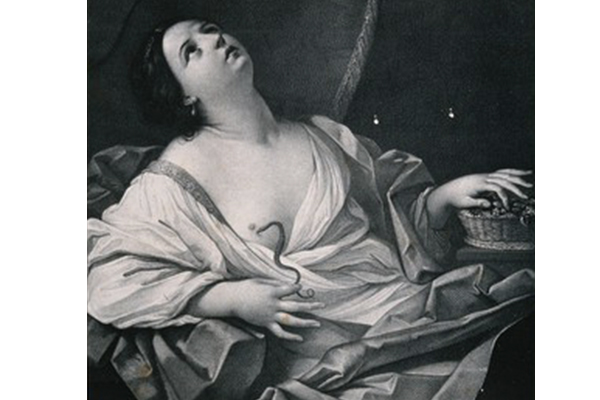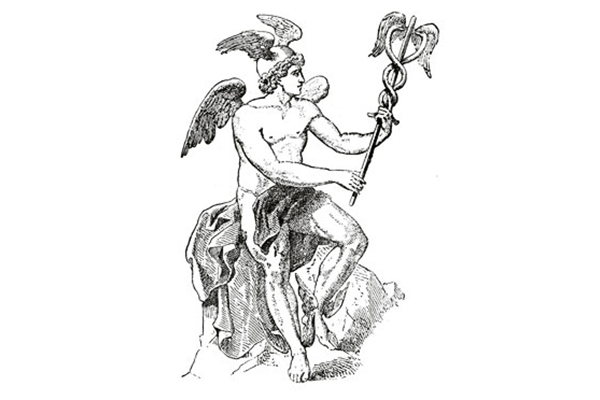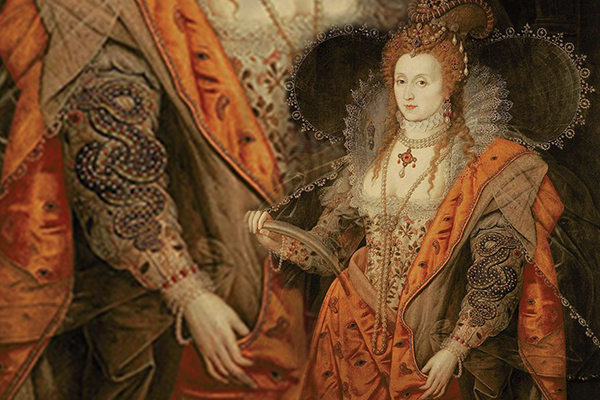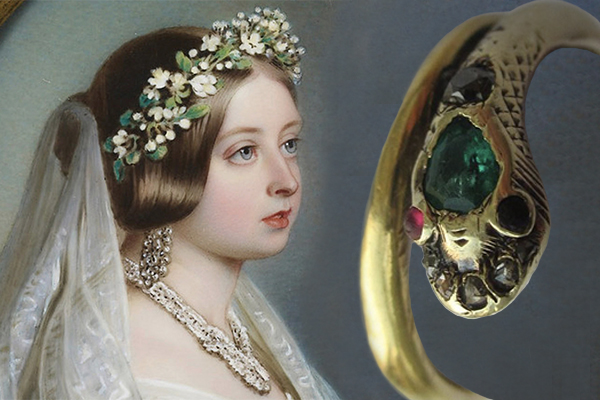14 DAY MONEY-BACK GUARANTEE - FREE WORLDWIDE DELIVERY
SAME-DAY LONDON DELIVERY
By Gitte Mortensen
This mesmerising creature with its slithering movement and silky-smooth exterior, has had mankind spellbound since the beginning of time. A globally recognised motif, the serpent often depicts evil or temptation to sin, however this strong symbol is also associated with healing, transformation, royalty, love, power and protection just to mention a few. No animal has been more worshipped yet more cast out, more loved yet more despised than the serpent.
It has for millennia been a very popular motif in jewellery, and it is believed that the first examples were created by the Mesopotamians and Egyptians. Some of the earliest examples of serpent jewellery came from the tomb of Queen Puabi, who ruled Mesopotamia in the early second millennium BCE. It is rumoured, that her bejewelled headdress featured two serpents entwined around a central staff.

Victorian depiction of the death of Cleopatra
Ancient Egypt saw the serpent as a symbol of sovereignty, and it was often incorporated into various elaborate pieces worn by pharaohs, with Cleopatra being known to wear several pieces of snake jewellery. The irony of this story is that according to legend she was killed by a serpent bite from an Asp; a queen taken down by the very same thing used to display her status and power. It is also interesting to note that gods then often were described as serpents. Perhaps this fascination with the animal gave the wearer a feeling of being closer to the gods or dare I even say it – feel like a god themselves.
Egypt is immensely fascinating when it comes to snakes and symbolism. One worth mentioning as well is the Ouroboros, meaning tail-devourer, symbolising infinity, rebirth and the cycle of life. The oldest-known Ouroboros appeared on a golden shrine in the tomb of Tutankhamen.

Ouroboros depiction in the golden shrine of Tutankhamen
In ancient Greece, the serpent was associated with healing and was often depicted in medical symbols such as the staff of Aesculapius – a branch entwined by a single serpent, the true symbol of medicine. Aesculapius was the god of medicine, and mythology tells, was killed by his grandfather, Zeus, with a thunderbolt because not enough people were passing onto the underworld due to his healing skills. Another famous mythological staff was the Caduceus, entwined by two serpents and sometimes surmounted by wings. Hermes (Mercury) was the messenger of the gods and known for carrying a Caduceus, which had a number of associations, including commerce, eloquence, alchemy, thievery and lying.

Caduceus being held by Hermes
From being a popular motif in ancient times, with a multitude of positive meanings, the Middle Ages certainly changed that, and the serpent became a symbol associated with evil and darkness. This is reflected in many works of art from this period, which often depict snakes as menacing creatures. Despite this negative attribution, snake jewellery remained popular among European royalty and the upper classes. Queen Elizabeth l was known to wear a gold serpent ring set with pearls. Indeed, a portrait by Marcus Gheeraerts the Younger called "The Rainbow Portrait" displays Elizabeth wearing embroidered decorations on her left sleeve in the style of a serpent with a ruby-heart jewel in its mouth. It is believed that the serpent here symbolises wisdom and prudence.

The Rainbow Portrait by Marcus Gheeraerts the Younger
Note the enlarged snake motif to left of the image
Serpent motifs are one of the earliest historical and culturally diverse mythological symbols, and figure prominently in jewellery throughout history. When jewellers today design serpent jewellery, no one is in any doubt as to what the animal looks like. Imagine three hundred years ago how very unlikely it would have been, that a jeweller had seen a serpent in real life. So, when entrusted with the task of crafting this jewellery, they would often refer to depictions from stories and mythology of giant sea serpents and dragons. This could explain why much of the antique snake jewellery may not look like your everyday serpent!
It was our very own late Queen Victoria who made the serpent an ultimate symbol of love, when Prince Albert presented her with an eighteen-carat gold unique, and very much ahead of its time, snake engagement ring, set with ruby eyes, a diamond mouth, and a large emerald centred on the head representing her birthstone. Serpent jewellery gained enormous popularity throughout the Victorian era, after this unique love declaration.

Queen Victoria and her Snake engagement ring
Choosing to wear serpent jewellery is the perfect way to add a touch of intrigue to any outfit, due to its unique history and symbolism. Classic dresser or daring fashionista, choose a piece you feel comfortable with and make it the star of your personal look!
We invite you to visit our showroom in Hatton Garden, where an intriguing family of serpents are ready to escape their nest, so they can bedazzle your person with centuries of history buried in their alluring work of arts.